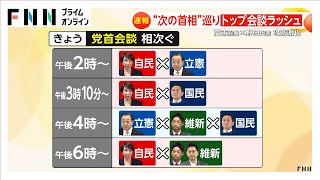However, Tamaki offered no clear response, later telling reporters that if he were chosen as prime minister, “policy management would still be difficult” and that “differences remain” between the parties.
The day began with a high-profile meeting between Takaichi and Constitutional Democratic Party leader Noda, which observers described as Takaichi’s de facto declaration to run in the prime ministerial vote. Noda said he asked whether the LDP planned to run alone or seek support from other parties, to which Takaichi replied that “nothing has been decided yet.”
Noda also revealed that he raised the possibility of the LDP seeking cooperation from Komeito if opposition parties were to unite behind a single candidate, a suggestion that seemed to catch Takaichi off guard.
Later in the day, Takaichi met Tamaki again for about 30 minutes, reiterating her desire to advance policies quickly and jointly rather than focusing solely on forming a parliamentary majority. Tamaki, however, remained cautious, saying that while there had been some convergence on issues such as security legislation and nuclear policy, significant gaps persisted.
He added that even if a coalition of the Constitutional Democratic Party, Japan Innovation Party, and Democratic Party for the People were formed, it would likely have to operate as a minority government, making policy implementation difficult. Tamaki also noted that while many of his party’s basic policies align with those of Takaichi and the LDP, trust had been undermined in the past, referencing broken promises during the Ishiba administration.
Talks among the three opposition leaders lasted about an hour and are expected to continue next week. Meanwhile, attention is now turning to a scheduled meeting between Takaichi and Japan Innovation Party leader Yoshimura in the evening, as speculation grows over whether the two parties might discuss a potential coalition.
https://newsonjapan.com/article/147286.php
